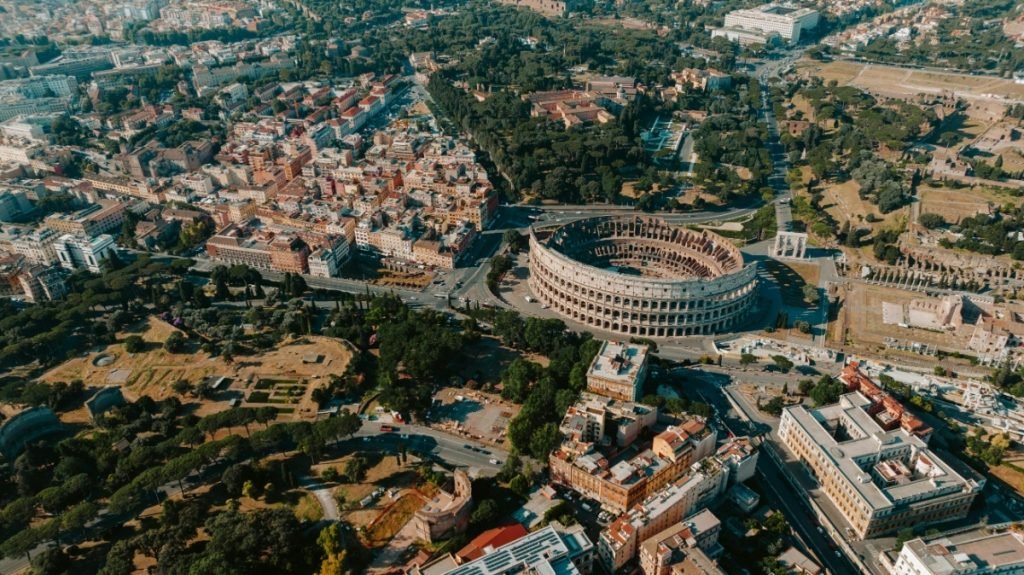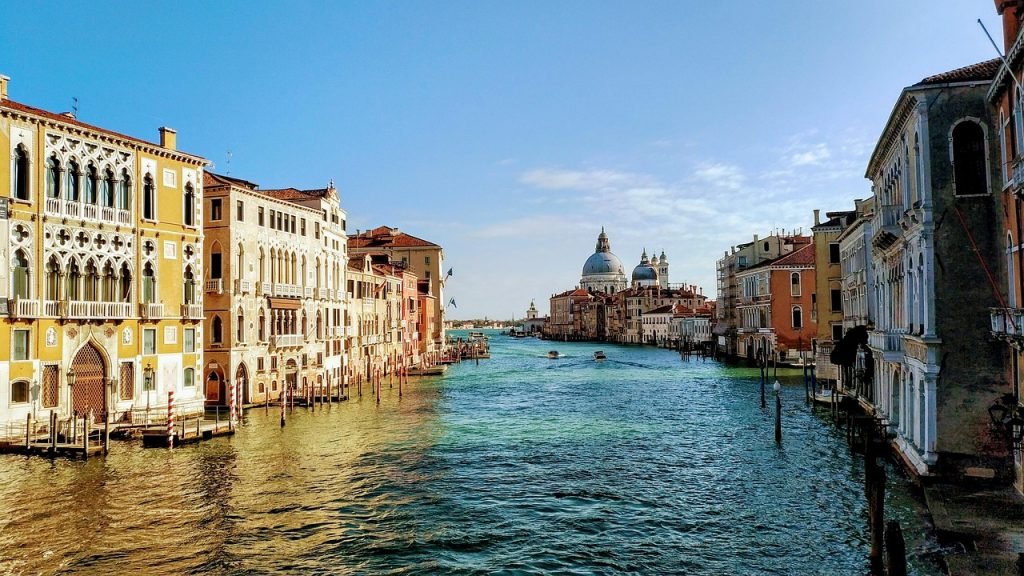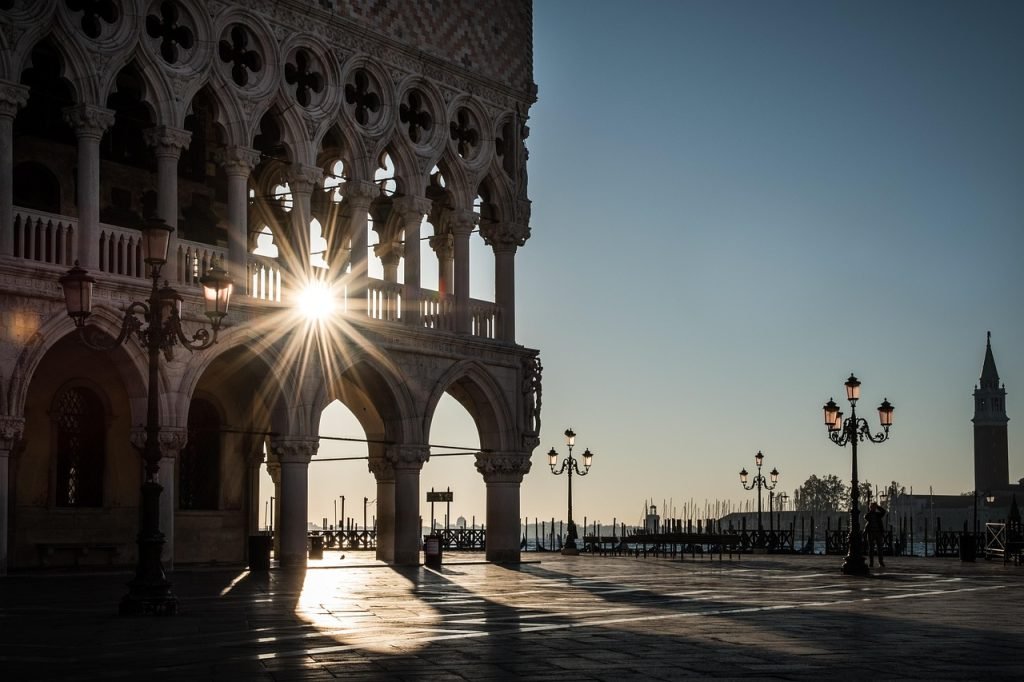⚠️ Fair Warning: Rome is Complicated
Before I spill the real tea about Rome’s neighborhoods, let me be brutally honest: this city doesn’t play by normal rules. I’m not Roman – I’m from the north – but I’ve spent enough time in the Eternal City to understand its contradictions.
Here’s the thing about Rome that Italians understand but rarely say out loud: è bella ma non ci vivrei – it’s beautiful but I wouldn’t live there. Rome can be magnificent and maddening in the same breath, elegant and chaotic on the same street corner. I absolutely adore this city – it might be one of my favorites in the entire world – but loving Rome and living in Rome are two completely different things.
Unlike Milan or Florence, Rome’s neighborhoods don’t fit neat categories. A single street can house millionaires and struggling families, ancient ruins and modern eyesores. The city’s 2,800-year history means every zone has layers – sometimes beautiful, sometimes problematic, always complex.
Consider this your unfiltered guide from someone who loves Rome deeply but has made peace with experiencing it as a visitor rather than a resident.
Ciao! Let me tell you what nobody wants to admit about living in Rome: it’s not the romantic movie set most people imagine. It’s a real city with real problems, real inequalities, and real magic – but you need to know where to find each.
As a northerner who’s navigated Rome’s contradictions for years, I’ll give you the honest truth about where to stay, where to live, and where to absolutely avoid. Because in Rome, the wrong neighborhood choice doesn’t just affect your budget – it affects your entire experience of this impossible, irresistible city.
The Golden Triangle: Where Roman Aristocracy Still Lives
Centro Storico – The Tourist’s Dream, The Local’s Nightmare
Let’s start with the obvious: the Historic Center. Properties here average €8,000 per square meter – more than double the city average. But here’s what the real estate agents don’t tell you: living here means your daily life becomes a tourist attraction.
Every morning, you’ll wake up to the sound of rolling suitcases on cobblestones and tour guides with megaphones explaining your street corner to groups of strangers. The restaurants are gorgeous but overpriced, the grocery stores are tiny and expensive, and finding a parking spot is like winning the lottery.
For tourists: Absolutely magical for a few days. You’ll walk to the Pantheon for morning coffee and stumble upon hidden churches that predate most countries.
For relocation: Only if you’re wealthy, patient, and genuinely don’t mind living in a theme park version of Rome. The charm wears thin when you’re paying €15 for basic pasta because you live near the Trevi Fountain.
Parioli – Where Old Roman Money Hides
Parioli property prices hover around €7,000 per square meter, and there’s a reason for that exclusivity. This is where Rome’s established families have lived for generations – quiet, elegant, utterly refined. Tree-lined streets, beautiful villas, excellent schools, and the kind of understated luxury that doesn’t need to show off.
But here’s the catch: Parioli can feel disconnected from the real Rome. It’s safe, clean, and sophisticated, but you might find yourself longing for more authentic Roman energy. It’s where you live when you want Rome’s address without Rome’s chaos.
For families with serious budgets: Perfect. For young professionals wanting Roman adventure: You’ll be bored within six months.
Prati – The Vatican’s Elegant Neighbor (My Personal Favorite)
Property prices in Prati range from €5,000 to €7,000 per square meter, positioning it among Rome’s priciest districts. But here’s why I consider this Rome’s best neighborhood for both tourists and residents: Prati combines the best of Roman living with unmatched strategic advantages.
The location is genius – you’re literally walking distance to Vatican City, which means you can skip the crushing queues at St. Peter’s Basilica and the Vatican Museums by arriving early morning before the tour groups. I’ve watched tourists struggle with 3-hour waits while Prati residents stroll over for 7 AM entry when the crowds are minimal.
Beyond Vatican proximity, Prati offers sophisticated shopping on Via Cola di Rienzo (Rome’s answer to Milan’s shopping districts), excellent restaurants that locals actually use, and some of the city’s best transport connections. The Ottaviano and Lepanto metro stops connect you to the entire city, while maintaining the neighborhood’s refined, residential character.
This area has real gravitas – wide boulevards designed to impress, elegant early 20th-century buildings, and the kind of Roman middle-class prosperity that built the modern city. It’s where Rome’s established professionals live when they want sophistication without the tourist circus of Centro Storico.
Why Prati works perfectly: You get Roman elegance with practical advantages. Early morning Vatican access, excellent dining, sophisticated shopping, perfect transport links, and residential calm. It’s Rome for people who want to experience the city intelligently, not just romantically.
The honest assessment: Prati is Rome for adults who’ve figured out how to live well. Refined, practical, well-connected, and strategically positioned. If you want Rome without drama but with easy access to its greatest treasures, this is your answer.
The Sweet Spots: Where Smart People Actually Live
Trastevere – The Romantic Illusion with Real Grit
Everyone falls in love with Trastevere’s cobblestone streets and ivy-covered restaurants. Both couples and solo female travelers are consistently recommended to stay in Trastevere for its romantic ambiance and safety. But let me tell you what happens after the Instagram photos are posted.
By day, Trastevere is charming – authentic trattorias, artisan workshops, and that perfect Roman neighborhood feel. By night, especially weekends, it transforms into party central for international students and tourists. The noise can be overwhelming, and the authentic character gets buried under pub crawls and tourist menus.
For tourists: Absolutely stay here, but choose your exact location carefully. Near Santa Maria in Trastevere is magical; near the main nightlife strips can be hellish for sleep.
For relocation: Great if you’re young and social. Challenging if you value quiet evenings at home.
Monti – The Hipster Haven That Locals Love
Monti perfectly balances authentic Roman character with modern amenities. This is where young Romans live when they want to feel connected to the city’s creative energy without paying Centro Storico prices. Monti offers romantic ambiance with cobblestone streets and cozy cafes, but it maintains more local authenticity than Trastevere.
The neighborhood hosts excellent restaurants that locals actually frequent, vintage shops that aren’t tourist traps, and enough cultural venues to keep you entertained without the crowds. It’s Rome’s Brooklyn – gentrified but not sterilized.
The reality: Monti works for both short stays and long-term living. You’ll pay more than outer neighborhoods but get genuine Roman neighborhood life in return.
Testaccio – The Authentic Roman Working District
Testaccio represents the real Rome that tourists rarely see – a former working-class neighborhood that’s maintained its character while slowly gentrifying. This is where Romans go for authentic food (the morning market is legendary), and where you can still find apartment rentals that don’t require a trust fund.
The nightlife scene centers around genuine local venues, not tourist-oriented clubs. The residential streets feel like actual neighborhoods, not outdoor museums. It’s Rome for people who want to live like Romans, not like tourists who never left.
For those seeking authenticity: Perfect. For those wanting polished elegance: Look elsewhere.
Aventino – The Hidden Aristocratic Gem
Aventino-San Saba properties average around €6,700 per square meter, but you get serious value for that price. This hilltop neighborhood offers some of Rome’s most spectacular views, beautiful residential streets, and proximity to major sites without tourist chaos.
The famous Orange Garden (Giardino degli Aranci) provides sunset views over the city, and the whole area maintains an almost village-like tranquility despite being central. It’s where Rome’s professionals live when they want luxury without ostentation.
The trade-off: Limited nightlife and fewer trendy restaurants, but unmatched quality of life for families and professionals.
The Emerging Areas: Rome’s Changing Face
EUR – Mussolini’s Modern Legacy
EUR (Esposizione Universale Roma) divides opinions like no other Roman neighborhood. EUR properties are priced between €2,500 and €4,000 per square meter, making it accessible compared to central areas. This Fascist-era planned district offers wide boulevards, rationalist architecture, and excellent transport connections.
The area feels more like a modern European city than ancient Rome – which is either refreshing or disappointing, depending on your perspective. It’s perfect for international businesses and families who want Roman life without Roman chaos, but some find it soulless.
For business professionals: EUR offers the best value-to-amenity ratio in Rome. For history lovers: You might feel disconnected from “real” Rome.
Flaminio – The Cultural Renaissance
Flaminio has transformed dramatically in recent years, anchored by the MAXXI contemporary art museum and the redeveloped Flaminio district. It’s becoming Rome’s cultural district while maintaining residential affordability and excellent transport connections.
This area attracts young professionals and creatives who want to be part of Rome’s modern cultural scene without paying historic center prices. The Auditorium Parco della Musica makes this Rome’s contemporary arts hub.
The emerging opportunity: Property values are rising as the area develops, making it interesting for both living and investment.
San Lorenzo – The Student Quarter with Character
San Lorenzo maintains its reputation as Rome’s university district, but it’s evolved beyond just student housing. The area offers affordable dining, vibrant nightlife, and a multicultural atmosphere that feels authentically urban rather than museumified.
The neighborhood can be gritty – street art covers many walls, and the energy is decidedly young and alternative. It’s Rome’s most diverse area, with immigrant communities adding flavors and perspectives you won’t find in tourist zones.
For young internationals: Perfect blend of affordability and energy. For families or those seeking refinement: Probably not your scene.
The Neighborhoods to Approach with Caution
Esquilino – The Multicultural Challenge
Esquilino, centered around Termini Station, presents Rome’s most complex neighborhood dynamic. Esquilino is identified as one of Rome’s most crime-ridden neighborhoods, but this requires context. The area around Termini Station hosts much of Rome’s immigrant community and can feel chaotic, especially at night.
However, Esquilino also contains beautiful areas like the Basilica di Santa Maria Maggiore and some of Rome’s best ethnic restaurants. The neighborhood is undergoing gentrification, but unevenly – some streets are perfectly safe and increasingly trendy, while others remain problematic.
The nuanced reality: Esquilino isn’t uniformly dangerous, but it requires local knowledge to navigate safely. Not recommended for first-time visitors or new residents unfamiliar with Rome.
Prenestino-Centocelle – The Local-Only Investment Zone
Properties in Prenestino-Centocelle can be found for around $450,000, making this one of Rome’s more affordable areas for purchasing. But let me be absolutely clear: this is not a tourist destination, and it’s not an investment opportunity for outsiders.
This neighborhood offers genuine Roman working-class culture and authentic prices that reflect its working-class roots. However, the area lacks the infrastructure, cultural amenities, and urban polish that central neighborhoods provide. Transport connections exist but aren’t excellent, and the urban environment can feel neglected compared to more prosperous areas.
The brutal truth: Investment potential here exists only for Romans who deeply understand local dynamics, have family connections in the area, or possess insider knowledge about specific micro-locations. For anyone else – especially international buyers or non-Romans – this represents more risk than opportunity.
For tourists: Absolutely no reason to stay here. Rome offers dozens of better options at every price point.
For investment: Only consider if you’re actually Roman, understand the local market intimately, and have specific knowledge about the area’s development potential. Otherwise, your money is better invested in established neighborhoods with proven track records.
The Absolute No-Go Zones
Tor Bella Monaca, San Basilio, Corviale – The Periphery Problems
San Basilio, Corviale, and Tor Bella Monaca are identified among Rome’s most crime-ridden neighborhoods. These peripheral housing projects represent Rome’s social housing experiments gone wrong – high unemployment, limited services, and genuine safety concerns.
These areas exist far from tourist Rome and offer nothing that visitors or new residents need. They’re not dangerous in a violent crime sense, but they’re isolated, under-resourced, and disconnected from the city’s opportunities.
The bottom line: No reason for tourists or expats to venture here. Rome has plenty of better options at every price point.
The Honest Tourist Advice
For a long weekend: Stay in Prati, Monti or near (not in) Trastevere. You’ll experience authentic Roman neighborhoods without complete tourist chaos.
For a week or more: Consider Testaccio or Aventino for authentic Roman life, or Prati if you prefer polished comfort near Vatican City.
Budget-conscious travelers: San Lorenzo offers the best value-to-experience ratio, especially if you enjoy university town energy.
For luxury travelers: Centro Storico for the full fantasy experience, or Prati if you prefer elegant comfort with strategic advantages – seriously, being able to walk to Vatican City and skip the tourist queues alone makes it worth the premium.
The Relocation Reality Check
For international professionals: Prati offers the perfect balance of Roman sophistication with practical advantages – Vatican proximity, excellent transport, and refined living. EUR works if you prefer modern efficiency over historical charm. Flaminio is emerging as an excellent option for those in creative industries.
For families: Aventino, Parioli, or select parts of Prati provide excellent schools, safety, and quality of life. Budget more than you think – Rome’s good neighborhoods aren’t cheap.
For students/young adults: San Lorenzo, Monti, or parts of Testaccio offer authentic Roman experiences with manageable costs and social opportunities.
For retirees: Aventino or quieter parts of Trastevere provide culture, walkability, and community without excessive noise or chaos.
What You Need to Know About Roman Life
Rome’s public transport is decent but not excellent – factor in walking time and occasional strikes. Many neighborhoods require good walking shoes and patience with irregular service.
Parking is a nightmare everywhere except EUR and some peripheral areas. Most Romans either don’t own cars or pay significant monthly parking fees. Factor €200-400 monthly for parking in desirable neighborhoods.
The bureaucracy is legendary – everything takes longer and requires more documentation than you expect. Having local connections or professional assistance isn’t luxury; it’s necessity.
August is brutal – many businesses close, temperatures soar, and the city’s rhythm completely changes. Romans who can afford it leave the city entirely.
Shopping and services close earlier than northern European cities expect. Plan accordingly, especially on Sundays when most commercial areas shut down completely.
The Cultural Reality Check
Rome rewards patience and punishes rushing. The city operates on relationship-based systems that take time to understand and navigate. What seems inefficient is often just different.
Learning Italian isn’t optional if you’re staying longer than a few months. Romans are generally welcoming, but the city functions in Italian, and expecting English everywhere leads to frustration.
The social rhythms are different – dinner starts at 8:30 PM or later, businesses close for riposo in the afternoon, and Sunday family time is sacred. Adapt to Roman rhythms rather than fighting them.
The Investment Perspective
Rome’s property market is expected to experience 6% growth in 2025, driven by international investor interest and favorable conditions. However, Rome’s property market moves differently than northern Italian cities – it’s less volatile but also less dynamic.
Central neighborhoods maintain value but have limited upside potential. Emerging areas like Flaminio offer more growth potential but require tolerance for ongoing development. EUR represents stable, if unexciting, investment potential.
Remember that Rome’s rental market heavily favors tourism – properties in desirable areas can generate significant income from short-term rentals, but this requires active management and regulatory compliance.
The Bottom Line: Rome’s Eternal Contradictions
Rome doesn’t make sense by normal urban planning standards. A neighborhood can be magnificent and dysfunctional simultaneously. Streets can be UNESCO-worthy and poorly maintained. The same area can feel completely safe during the day and sketchy at night.
This isn’t a bug – it’s a feature. Rome’s contradictions are part of its character. The city rewards those who embrace its complexity rather than expecting it to conform to other cities’ logic.
For tourists: Choose your neighborhood based on what kind of Roman experience you want – tourist fantasy, local authenticity, or elegant comfort. All are valid choices with different trade-offs.
For relocation: Start conservatively in established areas, then explore as you understand the city’s rhythms. Rome reveals itself slowly, and premature moves to “authentic” neighborhoods can lead to expensive mistakes.
The truth about Rome is that it’s simultaneously everything people say it is: magnificent and frustrating, ancient and modern, refined and chaotic. Your neighborhood choice determines which version of Rome becomes your daily reality.
Choose wisely, pack patience, and prepare to fall in love with a city that will never quite make sense but will always be magnificent. Just remember – there’s profound wisdom in the Italian saying “è bella ma non ci vivrei.” Sometimes the most beautiful places are meant to be loved from a distance, visited with joy, and appreciated without the burden of daily reality.
Benvenuti a Roma – welcome to the beautiful mess that is the Eternal City. Love it, experience it, treasure it – but maybe keep your permanent address somewhere else.


